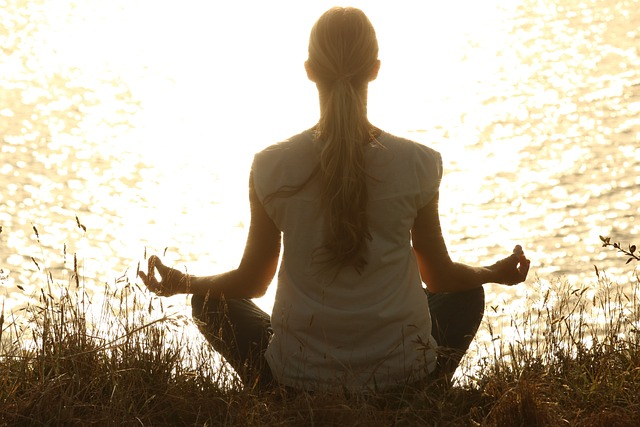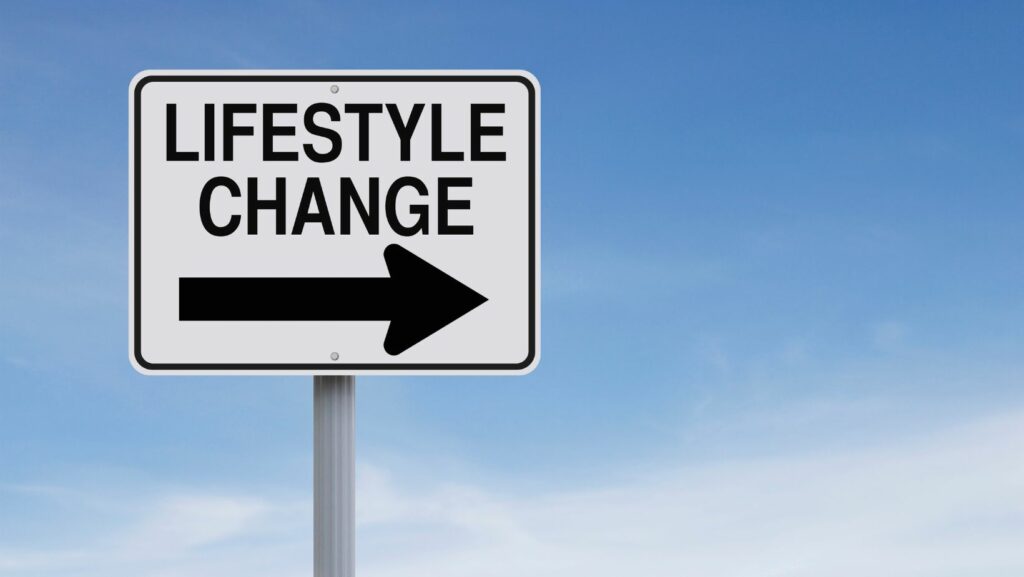Anxiety affects millions of people worldwide, impacting both mental and emotional health. From the overwhelming surge of anxious thoughts to the debilitating physical symptoms, anxiety can significantly hinder one’s day-to-day life. However, there are numerous strategies and techniques that can help manage and alleviate the effects of anxiety. Therapeutic Mental Wellness Approaches, whether through self-help methods or seeking professional mental assistance, are crucial for understanding how to deal with anxiety and ensuring overall well-being.
Educate Yourself About Anxiety Disorders
Anxiety disorders are not a one-size-fits-all condition. Each type, such as generalized anxiety disorder (GAD), panic disorder, social anxiety disorder (social phobia), and specific phobias, presents its own set of symptoms and challenges. By educating yourself about these different types, as outlined in the Diagnostic and Statistical Manual of Mental Disorders (DSM-5-TR) by the American Psychiatric Association you can better recognize the specific patterns and manifestations of anxiety that you or a loved one may be experiencing.
Physical Symptoms of Anxiety
Anxiety disorders can manifest through a wide range of symptoms, both physical and psychological. These symptoms may include excessive worry or fear, panic attacks, avoidance behaviors, irritability, restlessness, difficulty concentrating, muscle tension, and rapid heartbeat, among others. By familiarizing yourself with these symptoms, you can better identify when anxiety is at play and can help in managing anxiety disorders in your daily functioning.
Impact of Anxiety on Daily Functioning
An anxiety disorder can significantly interfere with various aspects of daily life, including work, school, relationships, and overall well-being. Individuals with anxiety disorders may struggle to perform tasks, socialize, or engage in activities they once enjoyed due to their symptoms. By understanding the impact that anxiety can have on daily functioning, you can develop empathy and compassion for yourself or others experiencing these challenges.
Identify Triggers
Identifying triggers is a fundamental aspect of managing anxiety effectively. Let’s dive deeper into this process.
What Can Trigger Anxiety?
Triggers are stimuli or situations that evoke feelings of intense anxiety or stress. They can be external, such as crowded places or public speaking, or internal, such as negative thoughts or memories. Triggers can also be subtle and difficult to identify, making it essential to pay close attention to your emotional responses, what seems to make your anxiety worse and patterns of behavior.
Identifying triggers requires self-awareness and observation. Keep a journal to track instances of heightened anxiety and note the circumstances surrounding them. Pay attention to your thoughts, emotions, and physical sensations during these moments. Over time, patterns may emerge, revealing common triggers that contribute to your anxiety.
It can also be helpful to seek feedback from trusted friends, family members, or mental health professionals. They may offer insights into your behavior and help identify triggers that you may not have recognized on your own.
Common Anxiety Triggers
Triggers can manifest in various forms, including:
Environmental Triggers
Certain environments or settings may provoke anxiety, such as crowded spaces, confined spaces, or unfamiliar places. For some individuals, specific sensory experiences, such as loud noises or bright lights, can also trigger anxiety.
Social Triggers
Social situations, interactions with certain individuals, or the fear of judgment and rejection can be potent triggers for anxiety. This may include situations like public speaking, networking events, or even casual social gatherings.
Internal Triggers
Internal triggers originate from within, often stemming from negative thoughts, memories, or beliefs. These may include feelings of inadequacy, self-doubt, or past traumatic experiences. Additionally, physical sensations such as fatigue or illness can exacerbate anxiety symptoms.
Cognitive Triggers
Certain thought patterns or cognitive distortions can contribute to feelings of anxiety. Catastrophizing (expecting the worst possible outcome), black-and-white thinking (seeing situations in extremes), and overgeneralization (applying a single negative experience to all similar situations) are examples of cognitive triggers.

Identifying triggers is a crucial step in managing anxiety. By understanding what sets off feelings of anxiety and developing coping strategies to address them, individuals can regain a sense of control and navigate challenging situations with greater ease. Remember, managing anxiety is an ongoing process, and it’s essential to be patient and compassionate with yourself along the way.
Utilize Relaxation Techniques
In the fast-paced world we live in, relaxation techniques serve as invaluable tools for managing anxiety and anxious feelings. They offer a reprieve from the constant barrage of stressors and provide a sanctuary for the mind and body to recalibrate. Here are some effective relaxation techniques to incorporate into your daily routine when you feel anxious:
Deep Breathing Exercises
Deep breathing exercises are simple yet potent techniques for reducing anxiety and promoting relaxation. Diaphragmatic breathing, also known as belly breathing, involves inhaling deeply through your nose, allowing your abdomen to expand fully, and exhaling slowly through your mouth. This technique engages the diaphragm, stimulates the body’s relaxation response, and helps regulate the autonomic nervous system, which governs involuntary bodily functions like heart rate and digestion.
Another effective breathing exercise is the 4-7-8 technique, where you inhale for a count of four, hold your breath for a count of seven, and exhale slowly for a count of eight. This pattern slows down the breathing rate, calms the mind, and induces a state of relaxation.
Mindfulness Meditation
Mindfulness meditation is a practice that involves directing your attention on the moment at hand without judgment. By cultivating awareness of your thoughts, feelings, and bodily sensations, mindfulness meditation can help you break free from the cycle of rumination and worry that often accompanies anxiety.

To practice mindfulness meditation, find a quiet space, sit or lie down comfortably, and bring your attention to your breath or a specific focal point, such as a mantra or sensation in your body. When your thoughts inevitably drift, gently guide your attention back to the present moment without engaging in self-criticism. Over time, regular practice can lead to greater emotional resilience, improved concentration, and a greater sense of inner peace.
Progressive Muscle Relaxation (PMR)
Progressive muscle relaxation is a relaxation method that entails methodically tensing and then releasing various muscle groups throughout the body. By deliberately tensing each muscle group for a few seconds before releasing the tension, PMR helps release physical tension and promote a deep sense of relaxation. Start by finding a comfortable position and focusing on your breath.
Then, progressively tense and relax each muscle group, starting from your toes and working your way up to your head. Pay attention to the sensations of tension and relaxation in each muscle group, and allow yourself to let go of any residual tension with each exhalation. With regular practice, PMR can help reduce muscle tension, alleviate physical symptoms of anxiety, and promote overall well-being.
Incorporating these relaxation techniques into your daily routine can help you manage anxiety more effectively and cultivate a greater sense of calm and balance in your life. Whether you practice deep breathing exercises, mindfulness meditation, progressive muscle relaxation, or a combination of these techniques, finding what works best for you is key. Remember that relaxation is a skill that takes time and practice to develop, so be patient with yourself and make self-care a priority in your journey towards managing anxiety.
Engage in Physical Activity
Engaging in regular physical activity is a powerful way to enhance both physical and mental health. Beyond its well-known benefits for cardiovascular health and weight management, exercise plays a crucial role to keep from feeling anxious and relieve stress.

Regulate Stress Hormones
When we engage in physical activity, our bodies release endorphins, often referred to as “feel-good” hormones. These chemicals interact with receptors in the brain to reduce our perception of pain and trigger positive feelings, akin to the effects of morphine. Furthermore, exercise helps regulate the body’s stress response such as the production of cortisol and adrenaline, which are often elevated in individuals experiencing an anxiety disorder. By reducing these hormones, physical activity can contribute to a sense of calm and relaxation.
Relieve Anxiety Symptoms
Studies have consistently shown that regular exercise can significantly reduce symptoms of anxiety and depression. Physical activity promotes neural growth, reduces inflammation, and improves neurotransmitter function, all of which contribute to a more resilient and balanced brain chemistry.
Additionally, engaging in exercise provides a distraction from anxious thoughts and allows individuals to focus their energy on the present moment, fostering mindfulness and reducing rumination.
Finding an Enjoyable Activity to Reduce Anxiety
The key to incorporating physical activity into your routine is finding activities that you enjoy and that fit your lifestyle. This could be anything from a brisk walk in nature to a high-intensity interval training (HIIT) workout at the gym. Yoga and tai chi, with their focus on breath and movement, are particularly effective in promoting relaxation and reducing stress levels. The goal is to choose activities that not only benefit your physical health but also bring you joy and a sense of accomplishment.
Create a Routine to Manage Stress
Consistency is key when it comes to reaping the mental health benefits of exercise. Aim for at least 30 minutes of moderate-intensity physical activity most days of the week, as recommended by health authorities. However, even short bursts of activity can have a positive impact on mood and anxiety levels. Incorporating physical activity into your daily routine, whether it’s walking instead of driving, taking the stairs instead of the elevator, or scheduling regular workout sessions, can help make exercise a habitual part of your life.
Incorporating physical activity into your daily routine is an effective strategy for managing anxiety and stress. By regulating stress hormones, promoting neural growth, and providing a distraction from anxious thoughts, exercise offers a holistic approach to improving mental well-being. Remember to choose activities that you enjoy, create a consistent routine, and prioritize movement as a form of self-care. With dedication and commitment, physical activity can be a powerful tool in your arsenal for combating anxiety and promoting overall health and happiness.
Seek Help from a Mental Health Professional
For those struggling to manage anxiety on their own, seeking help from a mental health professional, whether at an outpatient program or residential treatment center, is essential. Therapies such as cognitive-behavioral therapy (CBT) and exposure therapy have been proven effective in treating various anxiety disorders. Additionally, medication may be prescribed, as one of your treatment options, to alleviate symptoms and support overall mental health.
Create a Solid Support System
Building a support system can provide invaluable assistance in managing anxiety and other mental disorders. Whether it’s through therapy sessions, support groups, or confiding in a trusted friend or family member, having a network of support can offer encouragement and understanding during challenging times.

Prioritize Your Self-Care
Self-care practices are essential for maintaining mental and emotional well-being, especially for those dealing with anxiety.
This includes getting enough sleep, eating a balanced diet, and engaging in activities that bring joy and relaxation. Making time for yourself and placing importance on self-care can aid in diminishing stress levels and reducing symptoms of anxiety.
Tips and Tricks for Anxiety Management in Your Daily Life
Dealing with anxiety can be challenging, but it’s important to remember that help is available. By identifying triggers, utilizing relaxation techniques, incorporating physical activity, seeking professional help, creating a support system, and prioritizing self-care, individuals can effectively manage their anxiety and lead fulfilling lives. Remember, anxiety is a common part of the human experience, and with the right tools and support, it is possible to alleviate feeling anxious in your day-to-day life.



